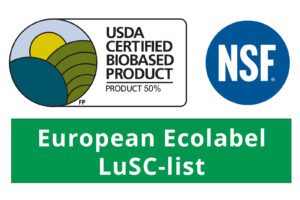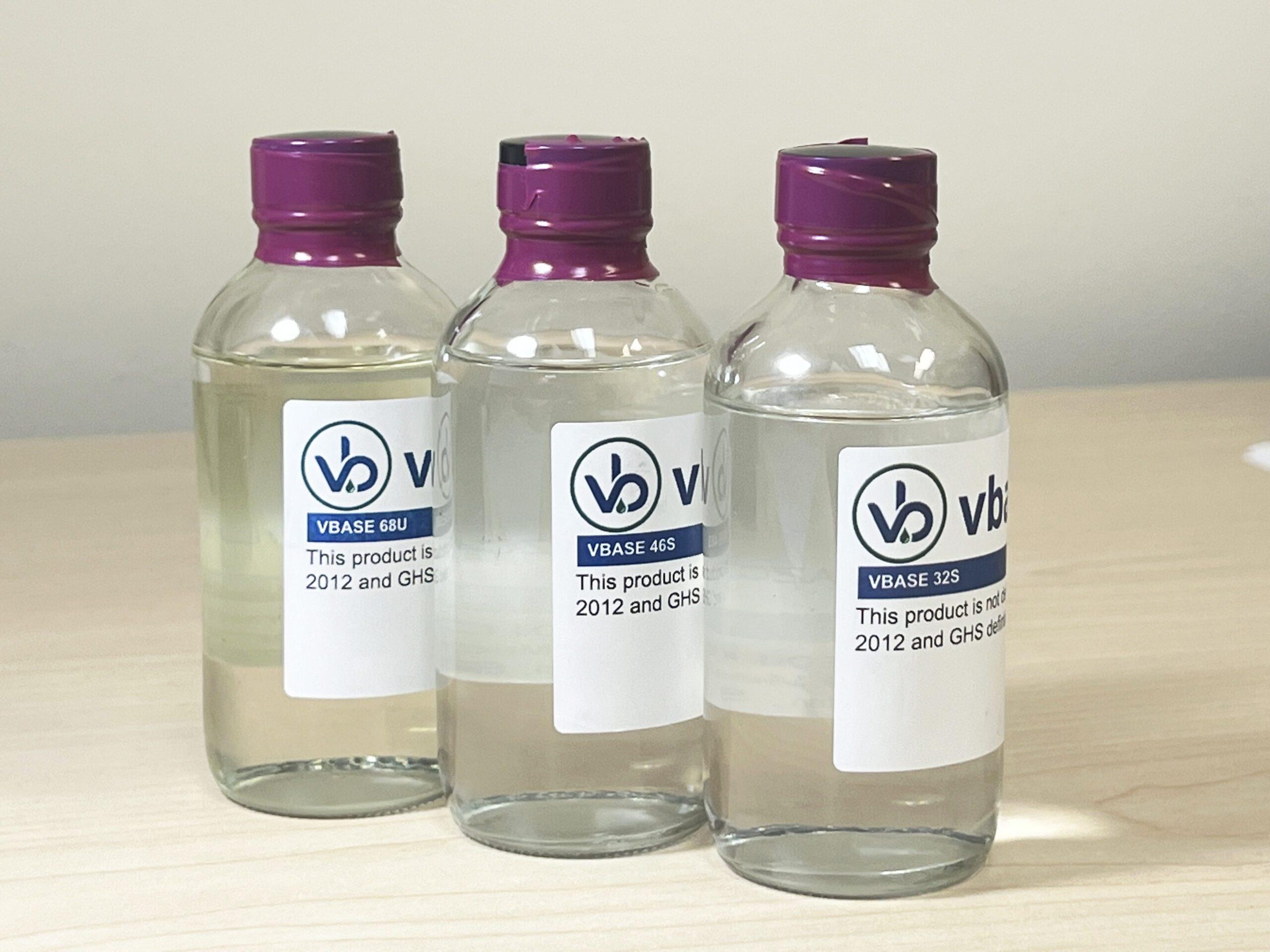Formulating VBASE SPE Lubricants with Anti-oxidants
Oxidation Stability and In-Built Detergency Data
Most lubricant formulations comprise anti-oxidants which can protect them against thermo-oxidative stresses in equipment. Classical free radical scavenger anti-oxidants are often the preferred choice and include aminic and hindered phenolic anti-oxidants. It is common to use combinations of anti-oxidants and sometimes with other types such as peroxide decomposers.
VBASE® Secondary Polyol Ester® base oils are a novel family of high performance sustainable base oil. These oxygen-rich base oils, with in-built detergency, offer functionality such as excellent viscosity-temperature behavior, good hydrolytic stability and are readily biodegradable with a high bio-carbon content.
The response to antioxidants of a selection of saturated and unsaturated SPE® base oils has been examined. Two aminic and two hindered phenolic antioxidants at treat levels of 1% by weight were assessed in the SPE® base oils using Differential Scanning Calorimetry (DSC). Test samples were heated from 20°C to 400°C at 10°C/minute in open aluminum pans with the sample cell purged under lab atmospheric conditions. Pan and sample weights were documented before and after analysis to track residual material weight. The result of a DSC experiment is a curve of heat flux versus temperature.

The onset temperature of degradation was measured for the virgin base oils and with the addition of single antioxidants. After the experiment, the weight of residue was also measured to assess the deposit control features of each formulation. VBASE 32S and 46S were selected as saturated SPE® base oils, VBASE 46U and 68U were selected as unsaturated SPE® base oils, and these were compared to trimethylolpropane trioleate (TMPTO) which is commonly used as an environmentally acceptable base oil for formulating bio-lubricants and fire-resistant hydraulic fluids.
Figure 1 illustrates that all four VBASE base oils exhibit excellent response to both aminic and both phenolic antioxidants with onset temperatures of degradation increased by 30 to 80oC. In contrast, TMPTO showed a weak response to both aminic antioxidants and only a mild response to both hindered phenolics. Antioxidant Am-A showed the most impressive performance in elevating the onset temperature of degradation in all four VBASE SPE® base oils.
Am-A = alkylated phenyl-alpha-naphthylamine
Am-B = alkylated diphenylamine
Ph-C = hindered phenolic (high molecular weight)
Ph-D = hindered phenolic
In the DSC experiment, the weight percentage of deposits remaining after the test was measured and is shown in Figure 2. This data can help with understanding deposit forming tendencies of lubricants.
Formulations of VBASE 32S and 46S exhibited very low deposits (<2%) and this is attributable to the high level of in-built oxygen within their chemical structures, which on oxidative degradation, leads to the formation of oxides of carbon and water. VBASE 46U and 68U exhibit more residue formation and this can be explained through the higher levels of unsaturation within their structures which can lead to intermolecular crosslinking via oxygen bridges and some high molecular weight deposit formation. This is much more significant for TMPTO which exhibits very high residue formation (>30%) for all formulations.
These experiments strongly suggest the presence of high levels of oxygen within the molecular structure of SPE® base oils significantly influences their deposit control behavior.
In further DSC experiments, the deposit forming tendencies of virgin VBASE base oils were compared to an API Group III hydrocarbon oil (ISO-46), a polyalphaolefin (ISO-46) and also an adipate ester (ISO-32). Figure 3 illustrates their behavior.
Simplistically, the Group III and IV hydrocarbon base oils do form higher levels of deposits. The adipate ester – a saturated ester – also exhibits higher levels of deposits than both VBASE base oils. This data further supports the excellent cleanliness characteristics of VBASE SPE® base oils on oxidative degradation.
Formulations using VBASE® SPE® base oils with an anti-oxidant package can deliver high temperature oxidative stability with minimal risk of deposit formation during any degradation process.





